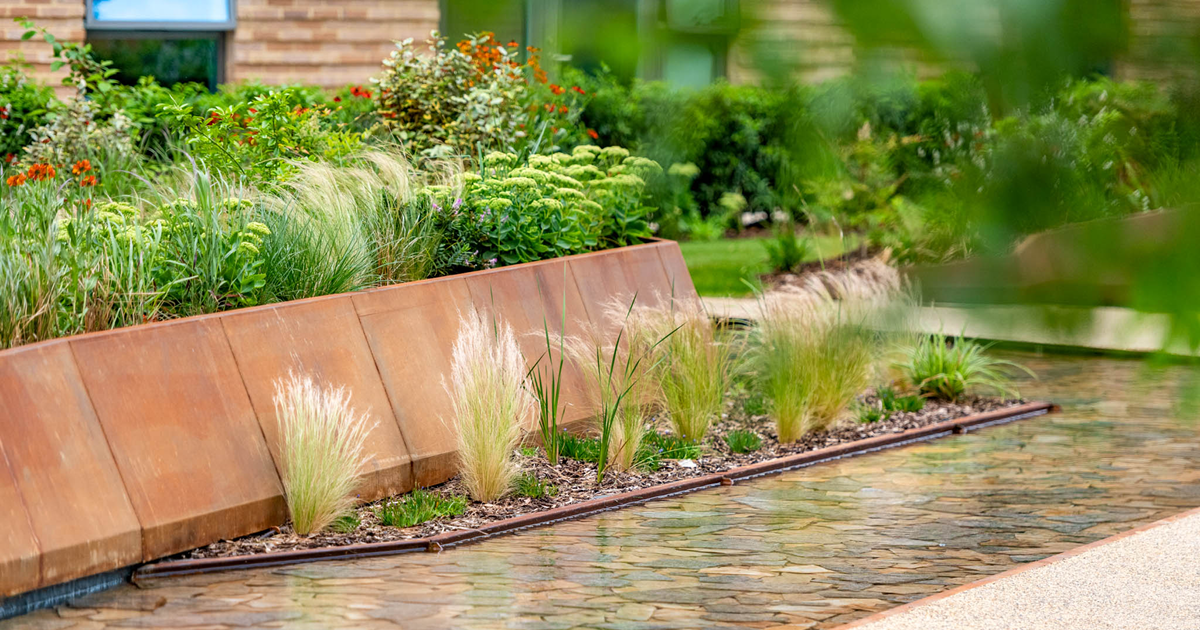
In urban and suburban landscapes, the challenge of creating private, tranquil spaces is ever-present. As cities grow, so does the demand for smart, aesthetic solutions that provide seclusion while maintaining a sense of openness. Raised planters are a versatile and effective tool for creating green barriers and for landscape architects aiming to enhance privacy and reduce noise without compromising visual appeal. By incorporating lush greenery in elevated structures, designers can create functional, beautiful spaces that promote well-being and sustainability.

Privacy is a critical consideration in both residential and commercial landscapes. Traditional methods such as fences and walls can feel rigid and uninviting. Raised planters, however, offer a more organic alternative, blending seamlessly into the environment while providing effective screening. By using tall, dense plantings within these structures, landscape architects can design layered, living barriers that create a natural sense of enclosure.
Unlike solid walls, raised planters introduce a soft, visually dynamic separation between spaces. They allow air and light to pass through while still providing sufficient coverage for privacy. This makes them an excellent choice for restaurants, office courtyards, rooftop terraces, and residential gardens where aesthetics matter as much as functionality.
Urban environments are filled with noise pollution, from traffic and construction to the general bustle of daily life. Raised planters play a significant role in dampening unwanted sound, particularly when filled with dense, broad-leafed plants and shrubs. The combination of soil, planter structure, and foliage absorbs and deflects sound waves, reducing noise levels in both residential and commercial settings.
To maximise sound absorption, landscape architects should choose plant species with thick foliage and flexible stems. Bamboo, hedging plants, and tall grasses, for instance, are excellent choices for breaking up sound waves and minimising noise transmission. When combined with tiered planting techniques, these green barriers create a multi-layered sound buffer that improves acoustics in outdoor spaces.

Raised planters do more than provide privacy and reduce noise—they also enhance the aesthetic and ecological value of a space. By integrating sustainable materials such as corten steel, recycled wood, or composite materials, landscape architects can design eco-conscious installations that align with green building practices.
Beyond material selection, raised planters support biodiversity by attracting pollinators, birds, and beneficial insects, which in turn enhance the broader ecosystem. By fostering a diverse range of flora and fauna, these installations contribute to improved air quality, soil health, and climate resilience. The presence of pollinators ensures plant vitality, while birds and beneficial insects help regulate pest populations, reducing the need for chemical interventions. This interconnected system strengthens urban and commercial green spaces, making them more self-sustaining and ecologically valuable. Choosing a mix of native and climate-adaptive plants ensures resilience and long-term sustainability. Additionally, integrating irrigation systems and water-efficient plantings reduces maintenance while promoting responsible water use. The result is a functional, beautiful, and environmentally friendly space that benefits both people and nature.
Raised planters are adaptable to various environments, making them a valuable asset for landscape architects. In residential gardens, they can define spaces, create outdoor rooms, or provide screening for patios and balconies. The elevation of planters allows for deeper soil beds, enabling the growth of larger plants that contribute to effective privacy screening.
In commercial settings, raised planters can transform rooftops, courtyards, and outdoor dining areas into inviting, green sanctuaries. Hotels, restaurants, and office buildings benefit from these installations by creating comfortable, semi-private zones that encourage relaxation and productivity. For developers and architects, incorporating raised planters into urban spaces enhances property value and attracts tenants seeking green, tranquil environments.
When integrating raised planters into a landscape, a few key design principles ensure their success:
As urbanisation accelerates, the need for thoughtful landscape solutions becomes even more vital. Raised planters provide a harmonious balance between structure and nature, offering an effective way to enhance privacy and reduce noise while elevating the overall aesthetic. By embracing these green barriers, landscape architects can shape environments that foster well-being, sustainability, and beauty in both residential and commercial spaces.
Incorporating raised planters into design plans is more than a functional choice—it’s an opportunity to create inviting, peaceful spaces that stand the test of time. With creativity and strategic planning, these installations can transform the way people experience outdoor spaces, bringing tranquility and privacy to even the busiest environments.
Get in touch with us to discuss incorporating raised planters into your project.
Interested in hearing more about rewilding? Read more here.